In an era where environmental consciousness is more crucial than ever, the fashion industry is stepping up to the plate, transforming its practices and paving the way for a greener tomorrow. “” delves into the innovative strategies and eco-kind initiatives that designers, brands, and consumers are embracing to reduce their ecological footprint.From the rise of eco-conscious materials to the adoption of circular fashion principles, the shift towards sustainability in fashion is not just a trend; it’s a movement towards a more responsible and compassionate approach to style.
Join us as we explore the inspiring stories behind these changes, the challenges still ahead, and how each of us can contribute to a more sustainable future in fashion. Together,let’s discover how this dynamic industry is redefining its values and championing a healthier planet for generations to come.
Exploring Eco-Friendly Materials for Conscious Fashion Choices

Along with these materials, there are exciting developments in the realm of bio-fabrication, where materials are created using natural processes, such as lab-grown leather from mycelium or algae-based textiles. This innovative approach aligns with the principles of a circular economy,where resources are reused and minimized. Below is a quick comparison of some popular eco-friendly materials:
| material | Source | Key Benefits |
|---|---|---|
| Organic Cotton | Cotton plants | Reduced pesticide use, breathable |
| Tencel | Wood pulp | Biodegradable, soft texture |
| Hemp | Hemp plants | Durable, low water consumption |
| Recycled Polyester | Plastic waste | Reduces landfill waste, versatile |
By choosing these materials, both designers and consumers can contribute to a more sustainable fashion ecosystem. With increased awareness and innovation,the journey towards a greener tomorrow is not just a possibility; it’s a reality that is unfolding beautifully before our eyes.
Innovative Practices in Sustainable Manufacturing and Supply Chains
The fashion industry is undergoing a remarkable transformation as brands embrace innovative practices to minimize environmental impact. By implementing circular economy principles, companies are rethinking the entire lifecycle of their products, from design to disposal. This includes strategies such as:
- Upcycling materials to create new products, reducing waste.
- Using biodegradable fabrics that break down naturally, minimizing pollution.
- Implementing a take-back scheme to encourage consumers to return items for recycling.
Moreover, collaborations between designers and technology firms are paving the way for smart manufacturing techniques. These partnerships focus on optimizing supply chains through digital tools that enhance openness and efficiency. For instance, the integration of blockchain technology is enabling brands to track materials and verify their origins, ensuring ethical sourcing. some notable benefits of such advancements include:
| Benefits | Description |
|---|---|
| Increased Transparency | Consumers can trace product origins, fostering trust. |
| Reduced Costs | Efficient manufacturing practices lower production costs. |
| Enhanced Sustainability | Less resource waste leads to a smaller carbon footprint. |
Encouraging Consumer Mindfulness: The Role of Recycling and Upcycling
As consumers become increasingly aware of their environmental impact, mindfulness in purchasing decisions is gaining traction. Embracing recycling and upcycling as part of the fashion narrative not only fosters a sense of responsibility but also enriches personal style. By choosing to purchase second-hand items or support brands that prioritize sustainable practices, individuals can significantly reduce waste while celebrating creativity and uniqueness in their wardrobes.Recycling allows materials to be reintroduced into the production cycle, while upcycling transforms discarded items into something new and valuable, turning potential waste into fashion statements.
In addition to individual actions, community initiatives play a crucial role in promoting sustainable consumption. Local clothing swaps, workshops on upcycling techniques, and educational campaigns about the benefits of recycling can definitely help cultivate a culture of mindfulness among consumers. Here are some simple yet impactful ways to encourage this ethos:
- Support local thrift stores: Not only dose this help reduce waste, but it also boosts local economies.
- organize swap events: Engage your community in exchanging clothes, giving new life to pre-loved garments.
- Learn upcycling tips: Discover how to turn old jeans into bags or t-shirts into shoulder straps.
Collaborative Efforts: How Brands and communities are Driving Change Together
In the ever-evolving landscape of fashion, brands are beginning to recognize the immense power that community collaboration holds in driving sustainable practices. By working hand in hand with local artisans, eco-conscious organizations, and social activists, brands can amplify their impact and foster a sense of shared responsibility. These collaborations frequently enough lead to innovative solutions that not only address environmental concerns but also strengthen community ties.As an example, fashion labels implementing circular economy principles are sourcing materials from local communities, ensuring that the production process benefits everyone involved, while also minimizing waste and carbon footprints.
Moreover, the rise of social media has facilitated vibrant dialogues between brands and consumers, creating platforms for feedback and collective action. This interaction encourages brands to adopt transparency in their supply chains, allowing communities to hold them accountable. Together, they champion causes such as ethical labor practices, environmental stewardship, and inclusive depiction. A testament to this synergy can be seen in initiatives like:
- Upcycling Workshops: Brands collaborating with local artists to transform waste materials into new products.
- Community Fashion Shows: Events that showcase sustainable designs while promoting local talent.
- Educational Campaigns: Programs aimed at raising awareness about sustainable practices in fashion.
In Summary
As we draw the curtain on our exploration of sustainable fashion, it’s clear that the journey towards a greener tomorrow is already in motion. The innovative practices and conscious choices being adopted by designers, brands, and consumers alike are not just changing the landscape of the fashion industry—they are also inspiring a broader commitment to sustainability in our everyday lives. By embracing eco-friendly materials, ethical production methods, and circular economies, we can all play a part in shaping a more sustainable future.
So, the next time you step into a store or browse online, consider the impact of your choices. Supporting brands that prioritize sustainability can drive meaningful change and encourage others to follow suit.Together, we can weave a narrative that celebrates both style and stewardship, ensuring that our love for fashion does not come at the expense of our planet.
Let’s continue to advocate for sustainable practices, educate ourselves and others, and champion a fashion industry that reflects our shared values. The path to a greener tomorrow is bright, and it starts with each of us making mindful decisions today. Thank you for joining us on this journey—together, we can create a sustainable future!


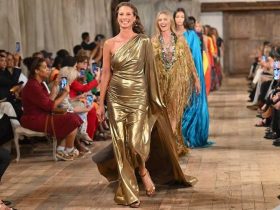

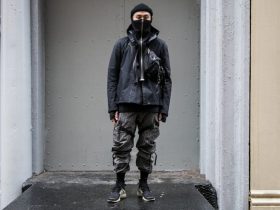
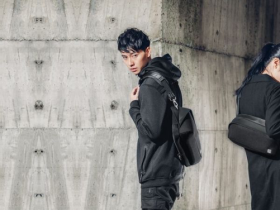


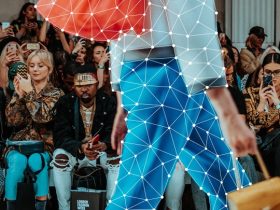
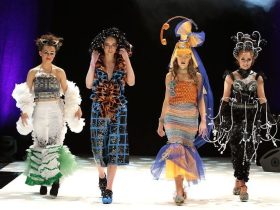
Leave a Reply